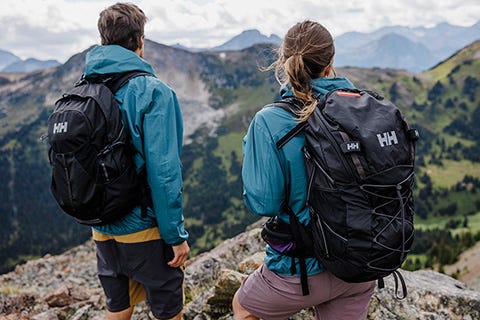
Local Storage seems to be disabled in your browser.
For the best experience on our site, be sure to turn on Local Storage in your browser.
Local Storage seems to be disabled in your browser.
For the best experience on our site, be sure to turn on Local Storage in your browser.
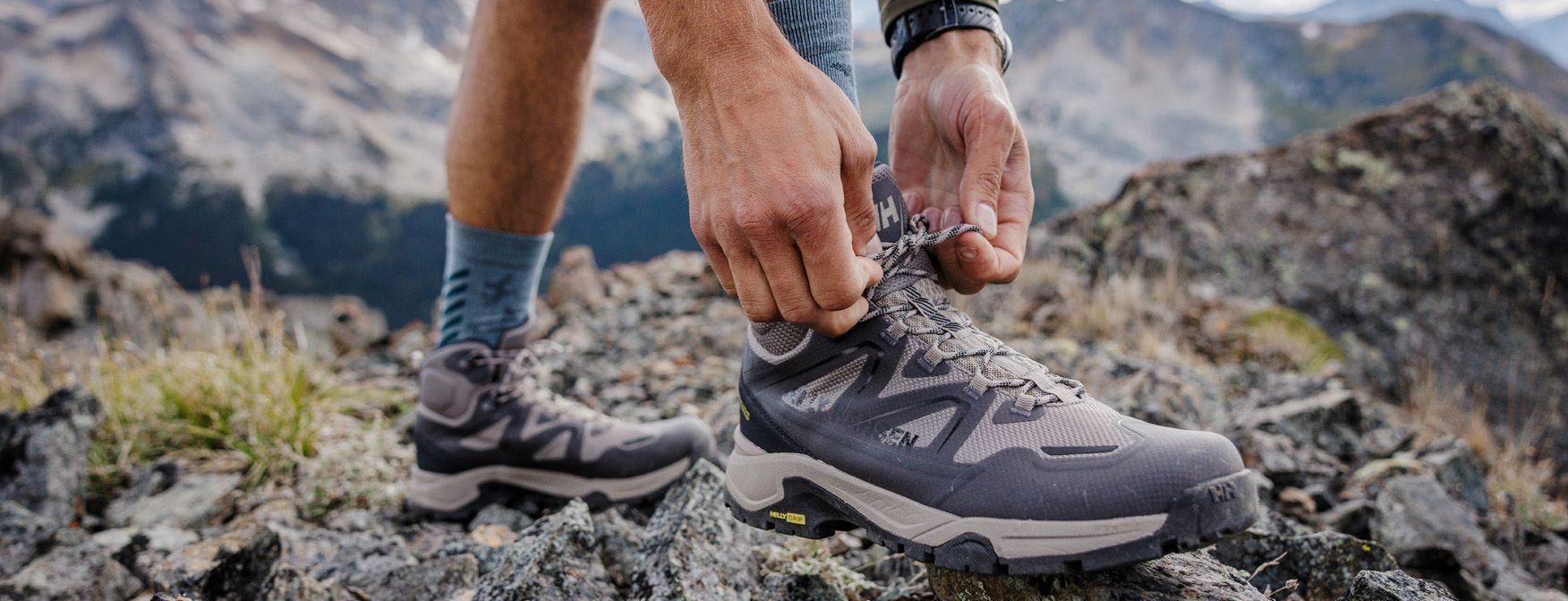
May 15, 2024
3 min read
The best hiking footwear should be comfortable to wear. Whether you choose hiking shoes or hiking boots comes down to personal preference, your hiking style and the type of terrain you’ll be taking on.
In this video, our Category VP of Footwear, Kristofer Eidsgaard, explains how to choose the ideal hiking boots tailored to your needs.
Typically, hiking boots have deep treads for traction on rocky and varied terrain. They also cover the ankle, which is useful for rugged terrain in wet, muddy conditions. Although slightly heavier than hiking shoes, hiking boots are generally more durable.
Hiking shoes are low-cut, designed for flexibility and agility. They are lighter, more breathable, and take less time to dry than hiking boots.
Rubber boots: While waterproof, rubber boots lack the support, traction and breathability for hiking, especially on uneven terrain.
Sandals: Although comfortable for casual walks, sandals don’t provide the protection or support needed for hiking. Plus, they leave your feet vulnerable to injuries from rocks, roots, and debris.
Know your destination and hiking style to give you the best experience. This includes the distance, terrain and what the weather forecast has in mind.
Fatigue can kick in quite hard if you’re hiking over multiple days, so wear hiking boots. As outdoor adventurer Jim Ryan said, “imagine every time item in your pack feels ten times heavier each day”. Long hikes with heavy backpacks require extra support for your feet and ankles, so look for mid-cut or high-cut boots to reduce the chance of rolling your ankle.
When it rains and the ground turns to mud, you want to focus on waterproof and breathable qualities. Rubber boots might tick the box for waterproof, but for breathability? Not so much. Across our range of hiking boots, HELLY TECH® Waterproof keeps your feet dry from the rain, while helping your feet to breathe.
For muddy terrain, you also need to level up on traction to help your footing. Pay attention to the lugs (the rubber indentations on the outsole), their depth and pattern.
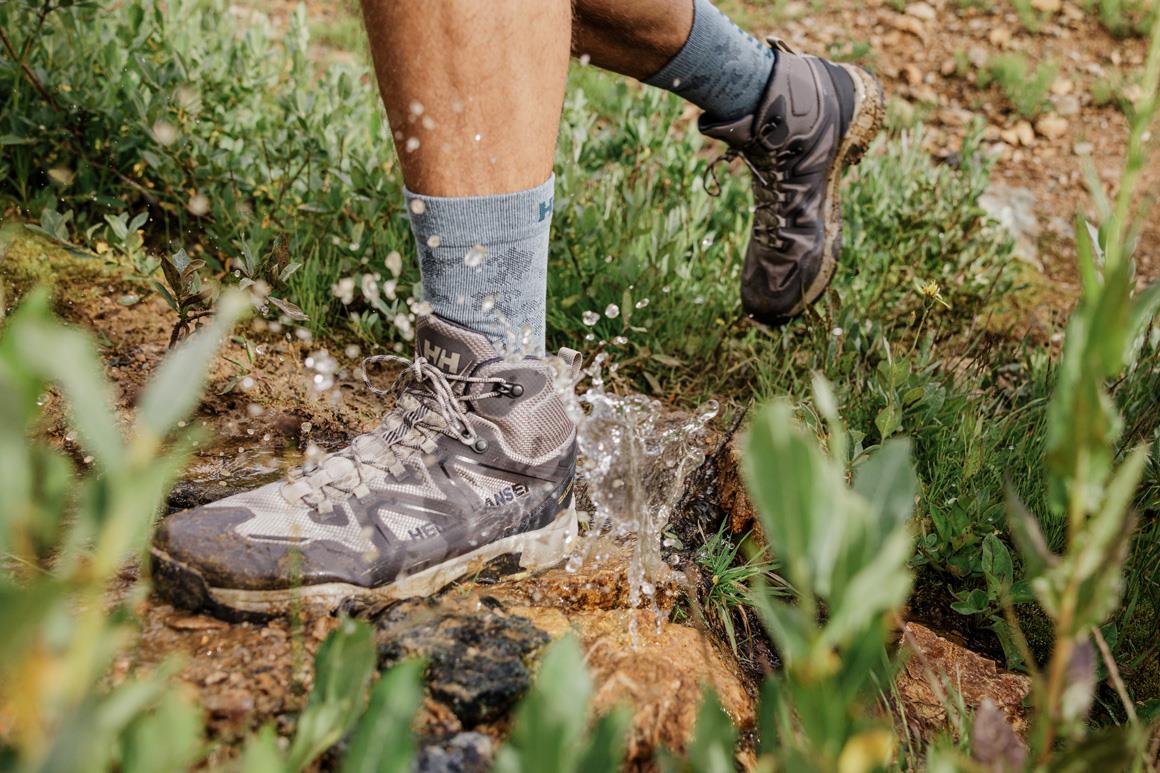
On this kind of terrain, you want some contact with the ground, but not too much. The trick here is to go for a pair of hiking boots with rugged soles.
Hiking shoes are perfect for day hikes, short trails and walks. They are lighter than hiking boots because you don’t need full ankle support. If your adventures take you to flatter and/or more predictable terrain, look for a softer sole with extra cushioning.
For light trips that are shorter distances, lower cut hiking shoes should provide sufficient support. If you are prone to rolling your ankle, consider a mid-cut design.
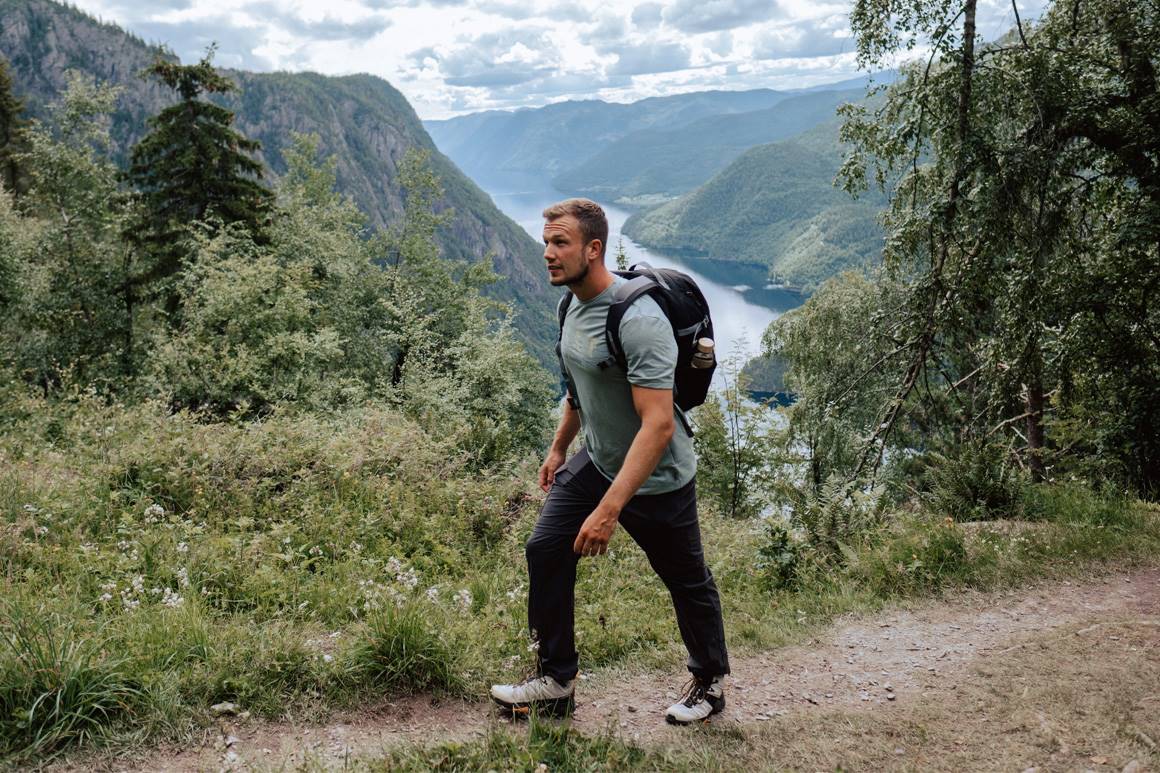
1. Try before you buy – everyone’s feet are different, so only you can determine what feels comfortable. Try on your hiking footwear towards the end of the day, and with the socks you plan to hike in. An indicator of a good fit is to check that your heel and midfoot feel snug, and that you have room at the front to wiggle your toes.
2. Socks – wear socks that are specifically designed for hiking. These are normally made with technical fabrics or wool, which wick away moisture. Whatever you do, avoid cotton. It absorbs moisture like a sponge and takes a long time to dry once wet.
3. Ankle support – some people prefer the lighter feel of hiking shoes but are concerned about the level of ankle support. If this is you, consider a set of hiking poles to offset the pressure. Hiking poles transfer the weight away from your joints and onto your upper body.
4. Gaiters – small stones and leaves are more prone to getting inside hiking shoes. Consider a set of gaiters if you’re backpacking in hiking shoes.
5. Break them in – before you even begin to hike, be sure “break in” your footwear, especially hiking boots. Wear them on the school run, errands and short walks around your local neighborhood. Over time they’ll soften, preventing blisters and ultimately, give you a more comfortable experience when you head out for longer adventures.
Remember, the right hiking footwear can take your hiking experience from good to great. They protect you from the elements and help you tackle various terrains.
Learn more about our footwear technologies and discover how they can help you.
Happy hiking, and don't forget to focus on your comfort and safety as you explore the outdoors!

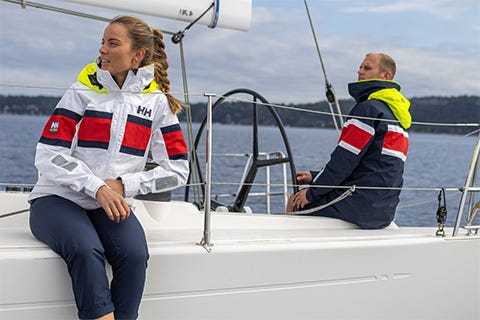
April 30, 2024 3 min read
To dress for coastal sailing, you want to be protected against the wind and spray from the waves, and also the sun. In this guide, we share some top tips for layering from professional sailors, Kayleen VanderRee and Pip Hare.

April 30, 2024 2 min read
Inshore sailing requires quick-dry materials and lightweight jackets. In this guide we share some top tips on what to wear from seasoned sailor, Mauro Melandri.